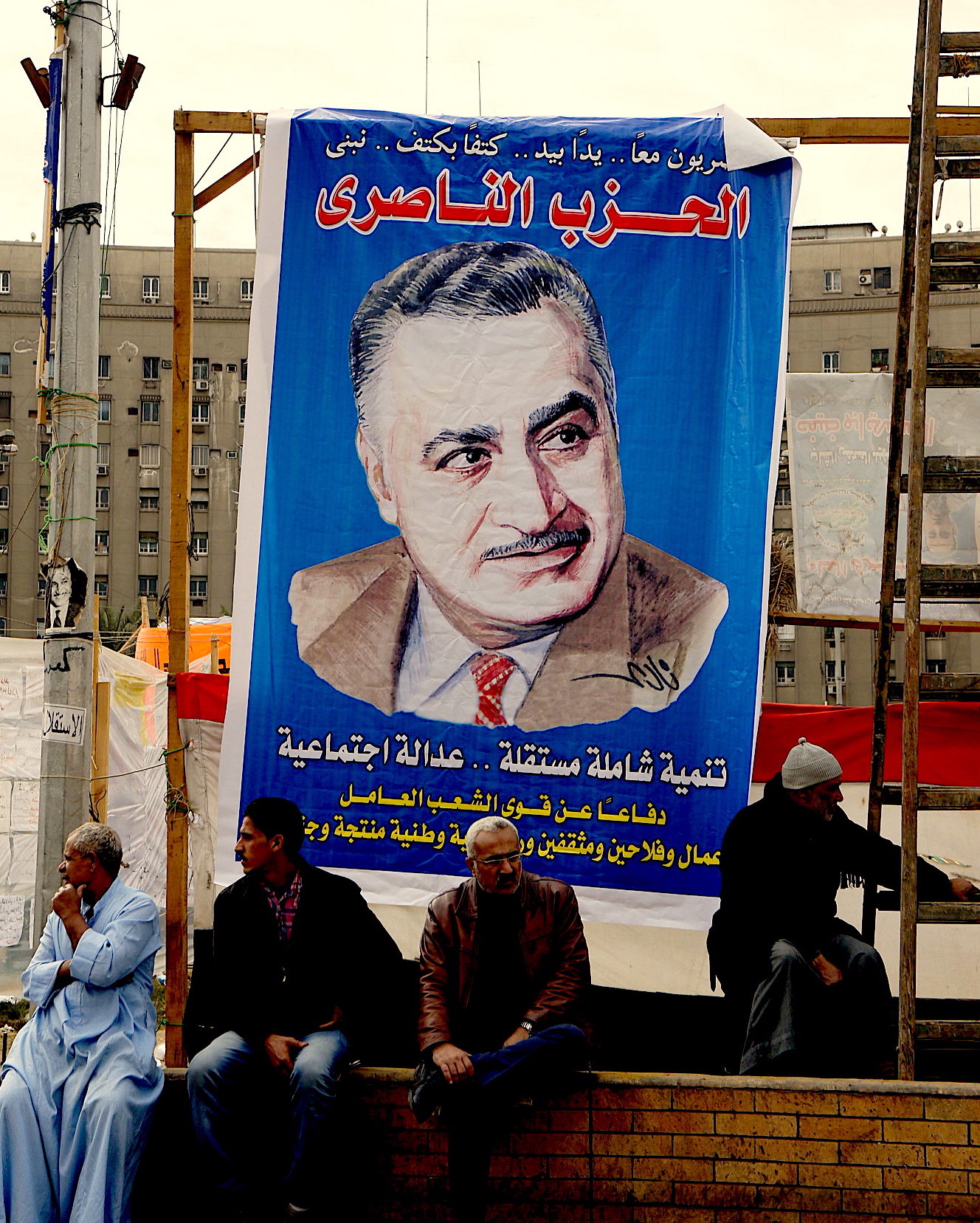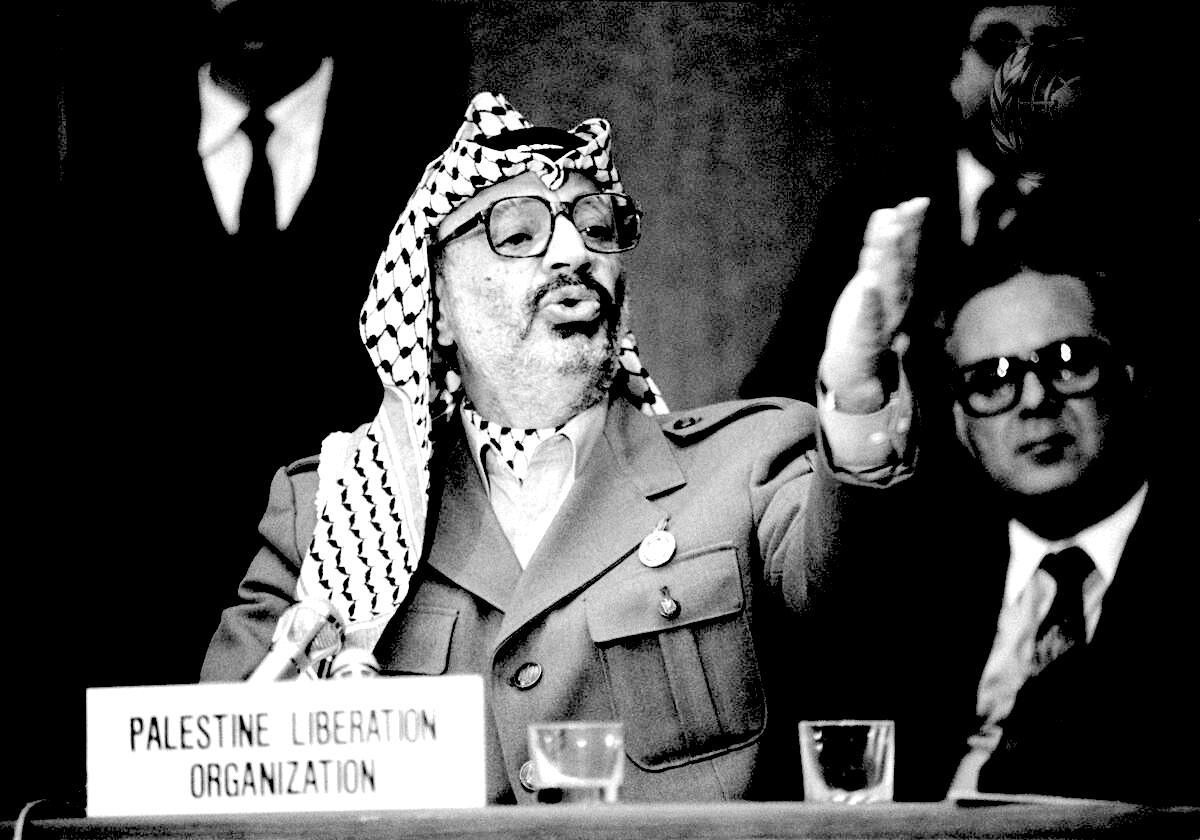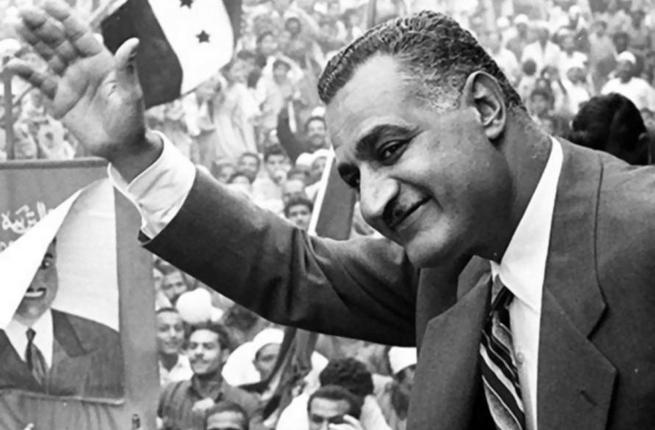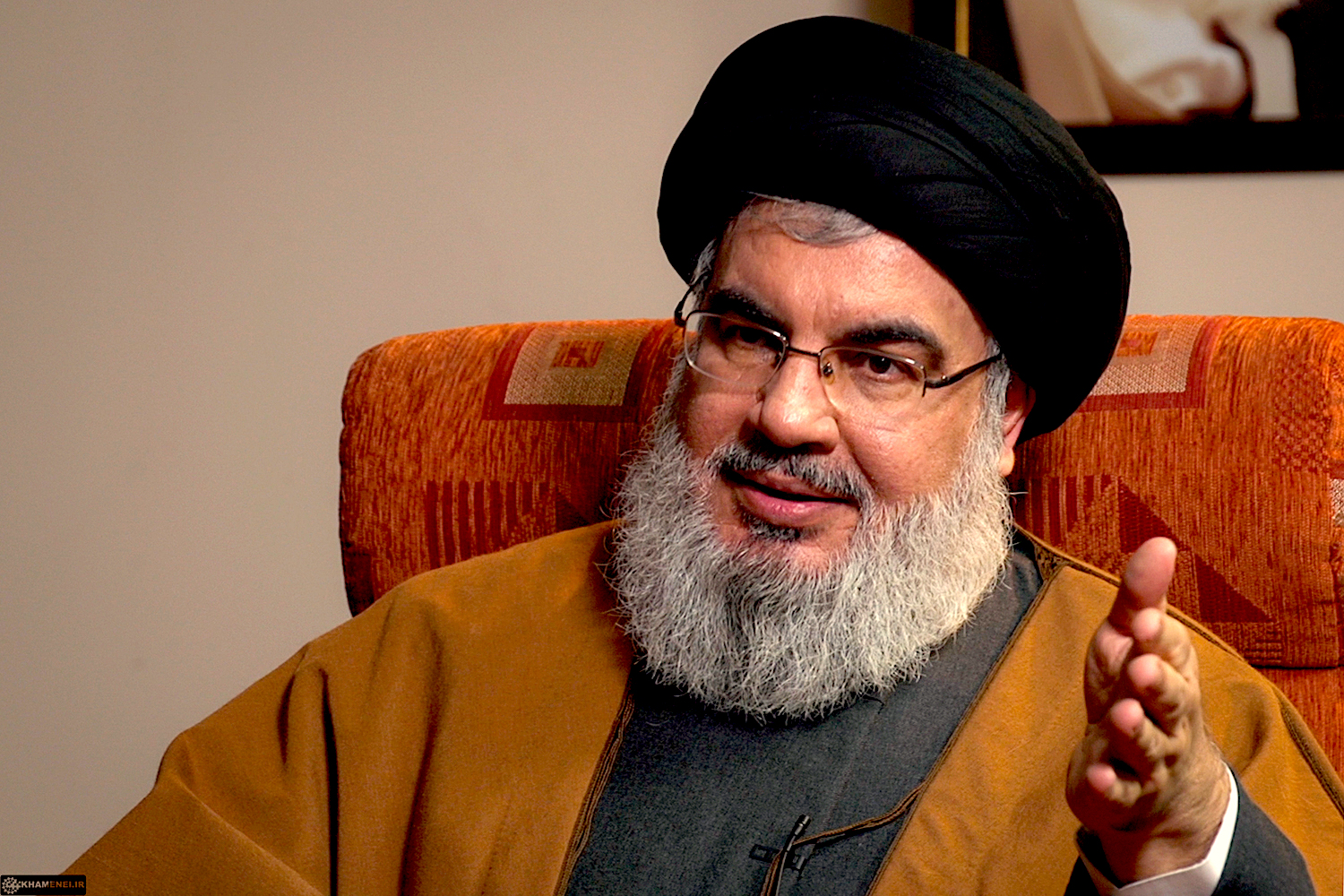They are incomparable in many ways, writes As`ad AbuKhalil. But each, within the era that he shaped, dominated the Arab stance toward Israel.

Poster of Gamal Abdul Nasser in Cairo’s Tahrir Square on the second anniversary of #Jan25 Revolution, Jan. 25, 2013. (Zeinab Mohamed, Flickr, CC BY-NC-SA 2.0)
By As`ad AbuKhalil
Special to Consortium News
 It may seem odd to compare these three Arab political leaders who have had a great impact on Arab politics and on the Arab-Israeli conflict. It does not seem fair to compare the three together because they were of different abilities, skills, and operated in radically different political environments.
It may seem odd to compare these three Arab political leaders who have had a great impact on Arab politics and on the Arab-Israeli conflict. It does not seem fair to compare the three together because they were of different abilities, skills, and operated in radically different political environments.
Only one of the three is Palestinian and he lacks the charismatic and oratorical skills of the first two. But the comparison is justified by virtue of the dominance of all three — each within an era that he shaped — in the formation of the Arab stance toward Israel.
The rhetoric of the Arab-Israeli conflict dominated Arab politics for much of the period from 1948 until 1990, when the Iraqi regime of Saddam Hussein invaded Kuwait. Ever since, the U.S. and Gulf regimes collaborated to end the verbal centrality of the Palestinian cause in Arab politics — although it remained central in Arab public opinion.
The U.S. government created the charade of Madrid (when Arab governments were represented in a face-to-face meeting with Israeli leaders) in order to make it easier for Arab rulers to make separate peace deals with Israel and to disregard the Palestinian cause altogether.
Arafat

Feb. 19, 1988: Yasser Arafat, chairman of the Executive Committee of the Palestine Liberation Organization, addressing U.N. Commission on Human Rights in Geneva. (UN Photo)
Yasser Arafat foolishly joined the charade and eventually felt betrayed by the U.S. government. But instead of intensifying the Palestinian struggle for liberation and independence, Arafat instead opened secret channels of negotiations with Israel which eventually led to the Oslo process. The process in effect killed the organized military form of the Palestinian liberation movement. The U.S. insisted that Arafat change and amend the Palestinian National Charter to accommodate the existence of the Israeli occupation on Palestinian land.
Arafat is quite different from Nasrallah and Nasser. The last two were great orators who had a strong impact on their listeners — in rallies and in larger radio and TV audiences. Arafat was a very popular figure among the Palestinians and he — despite the decades of Oslo and the revulsion of Palestinians from the consequences and repercussions of the “peace process” — remains hugely popular among his people, and a symbol for what was once — erroneously labeled — the Palestinian revolution.
In reality, Arafat was the counter-revolution (on behalf of Gulf regimes) within the Palestinian revolt. Arafat ensured that the revolutionary tendencies among the Palestinians (represented by George Habash and his comrades) not be allowed to prevail.
Arafat was seen as charismatic by his supporters and he knew how to rally a crowd. But he had a bad command of the Arabic language and could not read a text without making many mistakes even when diacritical marks were placed over letters — such as in the delivery of his historic speech at the U.N. in 1974.
He had a very good theatrical voice which he would use to great effect. He had no substance or peculiar style of oratory: he would simply yell out certain words or expression, like “revolution until victory,” or “mountain of fire” or “martyrs in millions,” etc. Those expressions were hardly literary or poetic but did stir crowds. Unlike Nasser and Nasrallah, Arafat was buffoonish and — like Anwar Sadat — had clownish characteristics in his delivery and stage performances.
Arafat’s rhetoric toward Israel was not really carefully crafted. He alternated between moderate words and ideas in English and strident rhetoric in Arabic. He certainly was more honest in English, but knew that his popularly required that he stick to the Arabic message to solidify his base. He did not study Israel or its military and considered none other than Mahmoud Abbas as his closest adviser on Israeli affairs.
He was never serious about the military option either: he just opened military training camps in Jordan and later in Lebanon, without once studying what the military option against Israel would entail. His military cadres were selected and promoted on the basis of loyalty and fealty and not on the basis of competence and qualification.
Nasser

Gamal `Abdul-Nasser waving to crowds in Mansoura, Egypt, 1960. (Wikimedia Commons)
Nasser and Nasrallah were more serious figures. Nasser was a phenomenon that the Arab world has not known perhaps since the victory of Saladin against the crusades.
Nasser’s popularity extended well beyond the Arab world and his portraits appeared in Tehran after the revolution (they were banned under the Shah) and they were seen in Tahrir Square in Cairo during the uprising in 2011.
As a child, I lived under the spell of Nasser and can’t compare the effects of his charisma to any leader before him or since. His utterances were closely followed in Western capitals and in Arab homes. His speeches stirred Arabs all over the region, even in countries run by his enemies (as in Gulf despots).
Imagine a leader whose rhetoric inspired Saudi princes to defect and join him in Cairo (later the princes Talal and Badr Ibn Abdul-Aziz returned to Saudi Arabia, but under terms of surrender that prohibited them from holding ministerial posts).
Nasser was not impulsive like Arafat and — like Nasrallah — studied carefully his words about Israel. He avoided anti-Jewish references and talked about the dangers of Zionism and the Israeli occupation state. (American Zionists looked in vain for evidence of anti-Semitism and could only find a sentence in an interview with one Indian journalist. His brother, Shawqi, published the notorious Protocols of the Elders of Zion).
Contrary to the image of Nasser in Gulf media (to this very day, more than 50 years after his death, Gulf regimes’ media still publish vicious attacks on Nasser as they never forgave him for his vilification of the regimes prior to 1967), Nasser was not bombastic or politically grandiose in his speeches on Palestine. He even admitted in May 1965 that he was unable to fight Israel. He was carefully building his armed forces but unfortunately assigned the task to his close friend, Abdul-Hakim Amir, who was incompetent and turned the army into his private militia.
Nasrallah

Hassan Nasrallah in 2019. (Khamenei.ir, CC BY 4.0, Wikimedia Commons)
Nasrallah is very different from Arafat and from Nasser. Nasrallah has superior command of the Arabic language and has his own style of speaking. While his leadership never reached the scale of Nasser on the pan-Arab level, he was able to achieve big popularity among Arabs and Muslims after the liberation of South Lebanon in 2000 and after the victory over Israel in the July war in 2006. But in the last decade, his popularity has suffered a great deal largely due to blatant sectarian campaigns against him led by Gulf regimes and partly due to the conduct and rhetoric of the his party, Hizbullah, in Syria and Lebanon.
Nasrallah studied Israel very carefully and built the most effective army against it. His words about Israel are very carefully crafted and he engages in psychological warfare against the enemy, while Arafat was laughed at by Israeli leaders. Arafat’s threats were much bigger than his military capabilities, while Nasrallah’s threats are in fact more modest compared to his capabilities.
Nasrallah also changed the rhetoric of Hizbullah. In its early years under the leadership of Subhi Tufaili (who was expelled from the movement and who is now close to the Saudi regime), the party did not shy away from repugnant sectarian and anti-Jewish rhetoric. In contrast, under Nasrallah the party officially adopted a political document in 2009 in which the party explicitly stated that its enmity is directed toward Zionism Israel and not against Jews, qua Jews.
That was quite unprecedented for any Islamist party in the Middle East. Nasrallah not only formed an effective resistance movement the likes of which was never seen in the region, but he also created a combat network which produces forces trained to fight Israel and its allies. It is quite stunning that this Lebanese movement achieved results that eluded all Palestinian resistance groups in Lebanon (the PLO was based in Lebanon from 1975 until 1982, when Arafat agreed to remove PLO forces and offices from Lebanon—which was the end of the Palestinian revolution.)
Both Nasser and Nasrallah were sincere in their declared positions toward Israel — regardless of whether one agrees or disagrees with those positions. Arafat, on the other hand, was not serious or sincere in his declarations and he shifted positions between interviews and between languages. Of the three, Nasrallah and Nasser were the biggest threats to Israeli occupation and aggression while Arafat restrained the Palestinian national movement because he aimed at peace, not war, with Israel.
As`ad AbuKhalil is a Lebanese-American professor of political science at California State University, Stanislaus. He is the author of the Historical Dictionary of Lebanon (1998), Bin Laden, Islam and America’s New War on Terrorism (2002) and The Battle for Saudi Arabia (2004). He tweets as @asadabukhalil
The views expressed are solely those of the author and may or may not reflect those of Consortium News.

Only one of the three is Palestinian and he lacks the charismatic and oratorical skills of the first two. But the comparison is justified by virtue of the dominance of all three — each within an era that he shaped — in the formation of the Arab stance toward Israel.
@Zee
What’s notable is that we’re coming to an end of the era of THE Arab stance towards Israel, and are already in an era where Arab nations are starting to look at their individual self interest, and have a stance on Israel based on that.
That’s good and is progress! It means that Arab states and their people are becoming more mature. (And yes, more fractured.)
The stance of the UAE, Saudis and Egypt is different from that of Jordan. Lebanon is seeing more voices for normalization, unfortunately too late as it’s rapidly becoming a failed state.
The Palestinians of course will end up being the losers, but that’s something they would have become accustomed to, given their national penchant of making poor decisions.